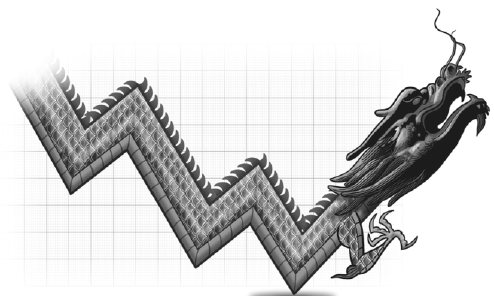It is possible for future growth to be higher
Updated: 2016-07-20 08:32
By Yao Shujie(China Daily)
|
||||||||
 |
|
LUO JIE/CHINA DAILY |
The GDP growth in the second quarter of this year was 6.7 percent, the same as that in the first quarter. Despite the slowdown in private sector investment-at 2.8 percent a year-the total social investment grew 9 percent in the first half. And total trade and exports grew 0.1 percent and 1.2 percent year-on-year in the second quarter, arresting the declining trend in China's global trade.
Import dropped just 1.2 percent in the second quarter, an improvement of 7.2 percentage points over the first quarter, which is a good sign since global trade has been a strong factor in China's growth.
Although its economic growth was relatively low in the first half, China managed to create 7.17 million new urban jobs, admirable by any international standard and an encouraging sign that structural change has started yielding results.
Reflected by the changing compositions of agriculture, industry and services, the national economic structure continues to improve, with the service sector growing much faster than the other two. In the first half of 2016, the added values of the service sector, industry and agriculture grew 7.5 percent, 6.1 percent and 3.1 percent. The service sector now accounts for 54.1 percent of GDP, 14.7 percentage points more than the share of industry.
Both rural and urban incomes have grown steadily. In the first half of 2016, urban per capita disposable income was 17,000 yuan ($2,543), up 5.8 percent, and rural per capita net income 6,050 yuan, up 6.7 percent, reflecting the narrowing of urban-rural income disparity. The urban-rural per capita income ratio has declined from 3.3 before the global financial crisis to 2.8 today. Although the level of urban-rural income inequality is still high, the economic reform has benefited the rural population more than its urban counterpart.
The uncertainty in the world economy poses a significant challenge to China's economic growth, as international trade is a serious factor hindering China's economic growth. But China has reached a development stage where future growth depends mostly on its ability to boost domestic consumption, by reducing the gap between the rich and poor regions, integrating the urban and rural sectors and providing essential stimuli to public investments.
Domestic challenges cannot be underestimated, as the pressure to reduce industrial overcapacity and the housing bubble, and to upgrade technologies is high, and the process of change is slow.
But it is encouraging to see that the value-added of high-tech and newly emerging industries, including pharmaceuticals, aerospace and information and communication technology, are growing much faster than those of the traditional ones. The value-added of these industries increased 11.8 percent, compared to 6 percent for the entire manufacturing sector, in the first half of 2016. Retail sales grew 10.3 percent, and the services sector industry contributed 73.1 percent to growth in the first half, a year-on-year increase of 13.2 percentage points. The contribution of investment to GDP growth was 37 percent, but the contribution of net exports fell to-10.4 percent.
China may not register higher growth in the short and medium terms, but the growth rates in the most recent four quarters at 6.9 percent, 6.8 percent, 6.7 percent and 6.7 percent mean the bottom of economic growth may have been reached. It also suggests that if the world economy recovers well, it is possible for China's future growth to be higher.
But even without the world economy recovering well in the first half of 2016, China has demonstrated its resilience to the harsh external and internal conditions. The worst may not be over, but China's ability to register a healthy growth and create more jobs should instill confidence about the future. It also shows China is on the right track to fulfill the development targets of the 13th Five-Year Plan (2016-20), as one of the key goals is to maintain a growth rate of not less than 6.5 percent.
The author is associated with Chongqing University and the University of Nottingham.

 Taiwan bus fire: Tour turns into sad tragedy
Taiwan bus fire: Tour turns into sad tragedy
 Athletes ready to shine anew in Rio Olympics
Athletes ready to shine anew in Rio Olympics
 Jet ski or water parasailing, which will you choose?
Jet ski or water parasailing, which will you choose?
 Icebreaker Xuelong arrives at North Pacific Ocean
Icebreaker Xuelong arrives at North Pacific Ocean
 Tourists visit Yehliu Geopark in New Taipei
Tourists visit Yehliu Geopark in New Taipei
 Uphill battle for cyclists in downhill race in Zhangjiajie
Uphill battle for cyclists in downhill race in Zhangjiajie
 Shennongjia added to World Heritage List
Shennongjia added to World Heritage List
 Campers sleep perched on cliff face in Central China
Campers sleep perched on cliff face in Central China
Most Viewed
Editor's Picks

|

|

|

|

|

|
Today's Top News
Ministry slams US-Korean THAAD deployment
Two police officers shot at protest in Dallas
Abe's blame game reveals his policies failing to get results
Ending wildlife trafficking must be policy priority in Asia
Effects of supply-side reform take time to be seen
Chinese State Councilor Yang Jiechi to meet Kerry
Chinese stocks surge on back of MSCI rumors
Liang avoids jail in shooting death
US Weekly

|

|







